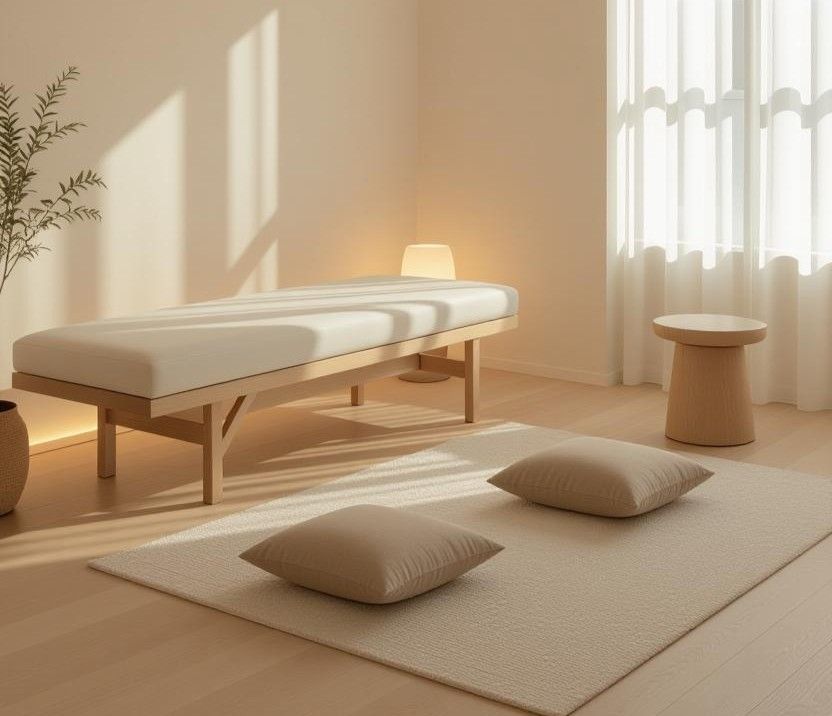
Luxury and intimacy define Jeju’s nightlife scene, where design plays as crucial a role as the cocktails or the company. Room salons on the island are no longer just spaces for entertainment, they are immersive environments crafted to evoke mood, exclusivity, and comfort. From the moment guests step through the door, every light, fabric, and texture contributes to a carefully designed experience.
The growing popularity of Jeju Room Bread (제주룸빵) reflects how modern nightlife design has evolved to merge leisure with luxury. These establishments have become showcases of contemporary aesthetics, borrowing elements from boutique hotels, spas, and private villas. Patrons no longer seek loud, neon-filled rooms; instead, they crave spaces that feel refined, secluded, and emotionally soothing. The ambiance, not just the activity, has become the centerpiece of Jeju’s night culture.
Lighting: The Mood Maker
Lighting defines how people feel the moment they walk into a room salon. Warm tones and dim illumination are now preferred over harsh, bright lights. Designers are using layered lighting, such as hidden LEDs, pendant lamps, and candle-style fixtures, to create intimacy. Spotlights highlight certain areas like private tables or karaoke stages, while diffused light softens the atmosphere. The goal is to make guests feel comfortable enough to relax, yet still aware that they’re part of an exclusive experience.
“Lighting doesn’t just reveal the space—it shapes emotion,” says a Jeju-based interior designer known for her work in high-end entertainment venues.
Color temperature also plays a big role. Warm amber lighting encourages conversation and comfort, while subtle hues of pink or gold add an elegant touch. Designers know that light can influence human connection, and in a place where social chemistry matters, this detail can’t be overlooked.
Seating: Comfort Meets Elegance
Seating arrangements are where design meets psychology. In Jeju’s luxury lounges, furniture layout often determines the flow of social interaction. Plush sofas arranged in semi-circles encourage conversation and connection, while private booths offer discretion and exclusivity. High-quality materials such as velvet, leather, and silk upholstery reflect sophistication and tactile comfort.
Designers are also focusing on ergonomics, ensuring that guests can lounge comfortably for hours. Tables are placed strategically, close enough for drinks and snacks but far enough to allow privacy. Even the height of the seat cushions matters, balancing posture with relaxation.
Spatial Design: Privacy as a Luxury
Space division is an art form in Jeju’s nightlife interiors. The architecture of a high-end room salon often mimics that of a private residence, with corridors leading to individually designed rooms. These rooms vary in theme, some are inspired by Japanese ryokans, others by modern European lounges. Privacy is key, but so is fluidity. Soundproof partitions, sliding doors, and discreet entryways create separation without making guests feel isolated.
- Private karaoke rooms with acoustic panels
- “Healing rooms” featuring soft lighting and aromatherapy
- Exclusive VIP suites with panoramic views of Jeju’s coastline
Each of these spaces contributes to a seamless narrative: the idea that nightlife can be both social and restorative. The best designs balance intimacy with elegance, ensuring guests feel they’re part of something secret yet luxurious.
Textures and Tones: A Sensory Experience
Texture completes the story that lighting and layout begin. Silk curtains, marble countertops, and dark wood accents dominate Jeju’s high-end nightlife interiors. Soft fabrics absorb sound, creating a cocoon of calm amid music and laughter. Color palettes have shifted toward earthy neutrals such as taupe, mocha, and gold, with occasional bursts of crimson or emerald for dramatic contrast. Designers who understand the role of interior design in creating relaxing wellness spaces often draw on these same sensory principles to balance energy and tranquility.
The overall goal is sensory harmony. Guests should feel the comfort of plush seating, see the glow of golden light, and hear the muted rhythm of soft music. These elements blend to produce an experience that feels personal and unforgettable.
The Future of Room Salon Design
Jeju’s nightlife continues to evolve as design becomes a statement of identity. Venues are experimenting with sustainable materials, modular spaces, and digital mood controls. Some even integrate scent-based design, where specific aromas are diffused to match the night’s theme. This evolution suggests that room salons are moving closer to holistic entertainment, where architecture, wellness, and technology coexist.
As Jeju Room Bread and other exclusive venues continue to refine their interiors, they are setting new benchmarks for experiential nightlife. These are not just rooms; they are curated escapes designed to heighten emotion, foster connection, and celebrate the beauty of design itself.
In the end, designing the perfect room salon in Jeju is about more than luxury, it’s about crafting emotion through space. The interplay of light, comfort, and privacy shapes how guests remember their night. And as trends continue to blend hospitality with mindfulness, Jeju’s nightlife will remain as much about aesthetics as experience, with Jeju Room Bread leading the way in redefining what elegance means after dark.